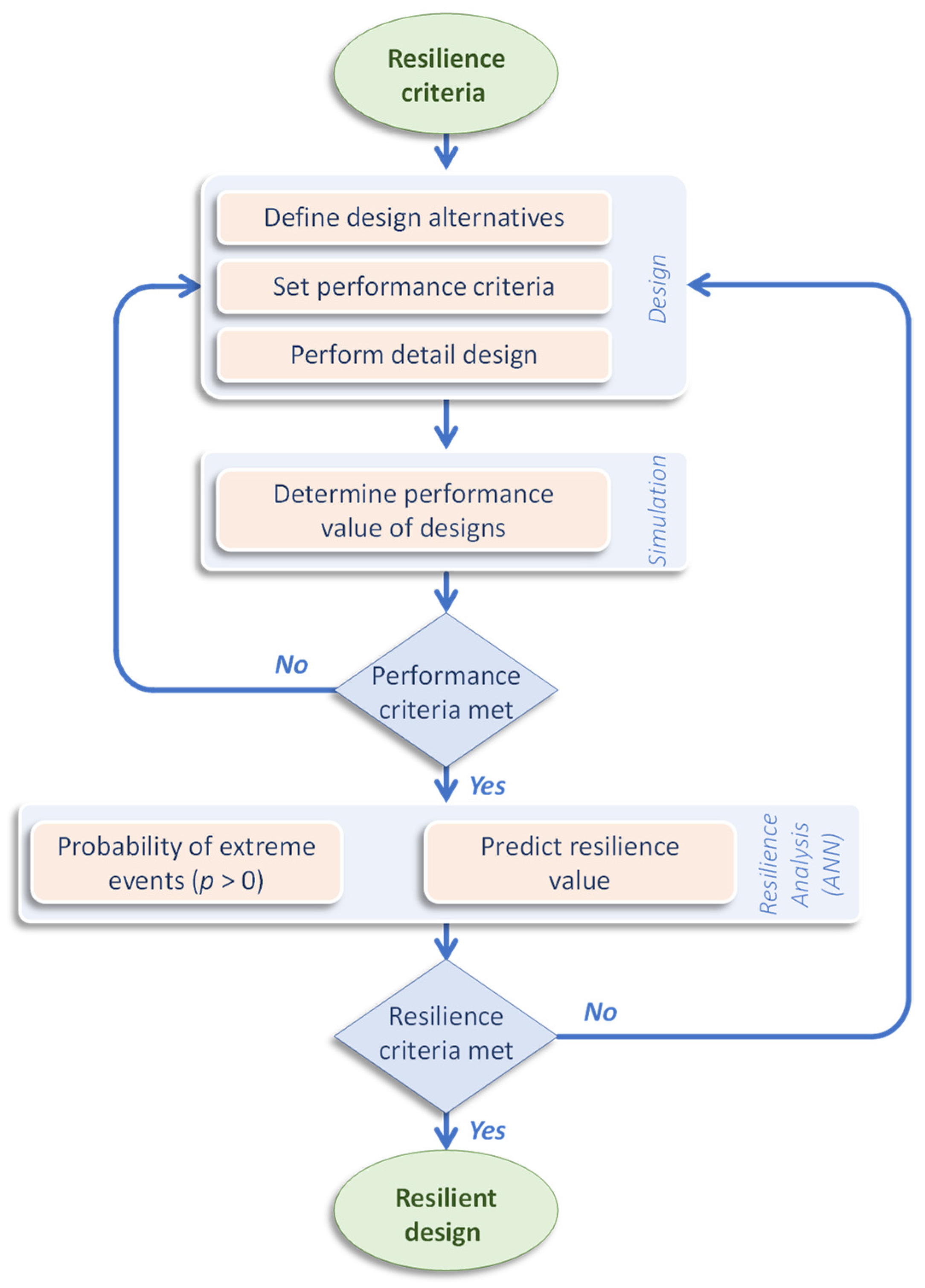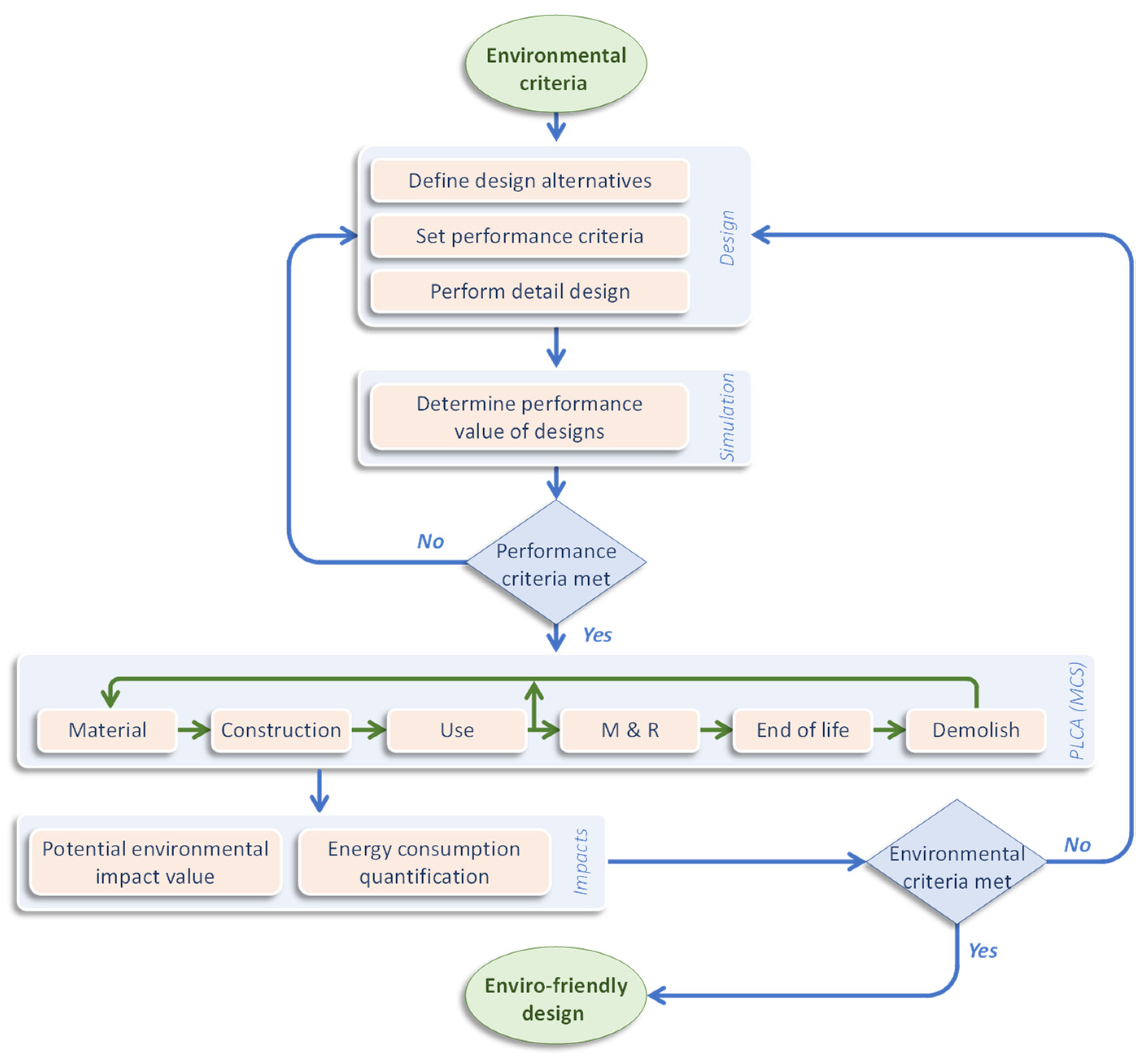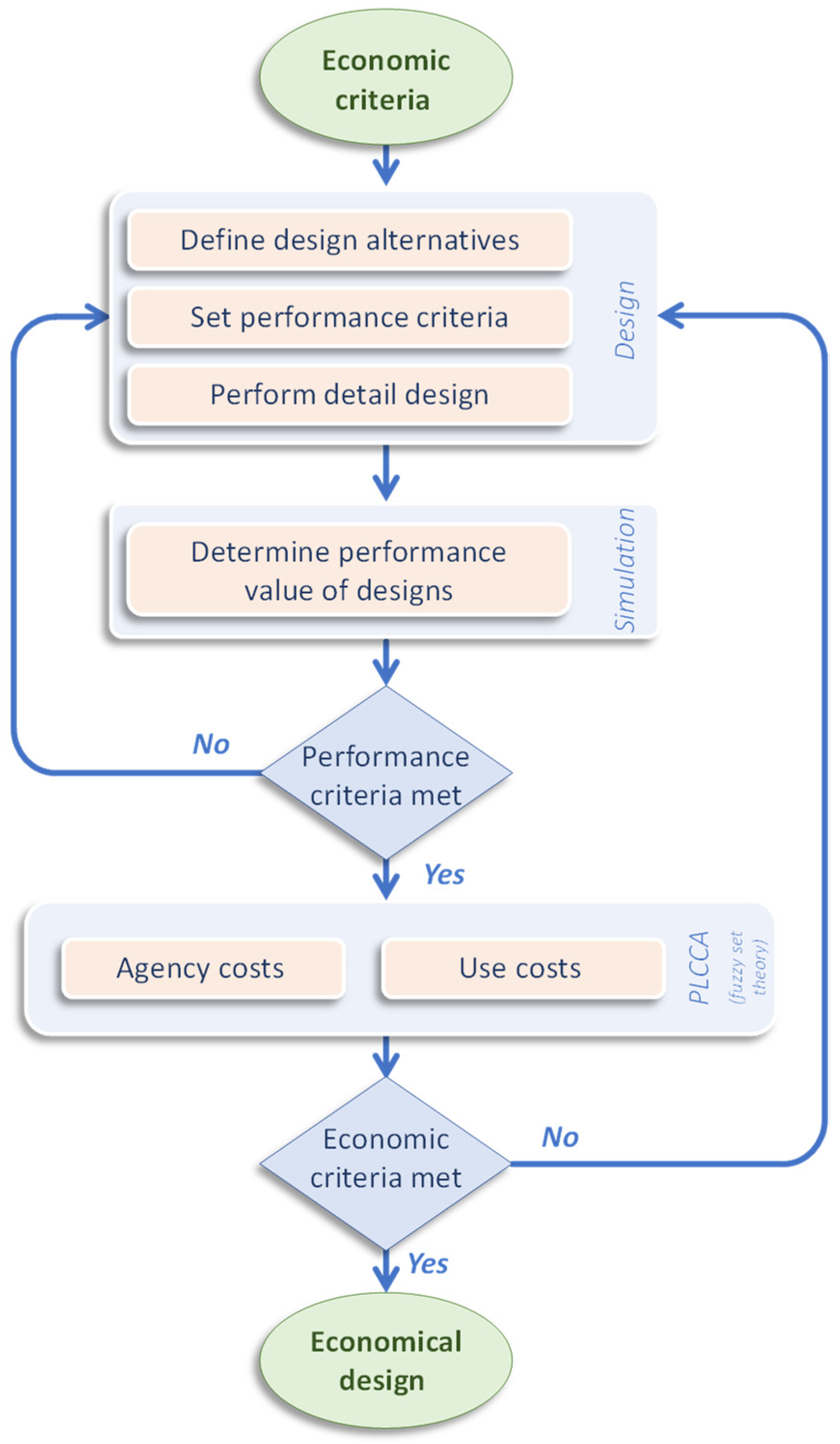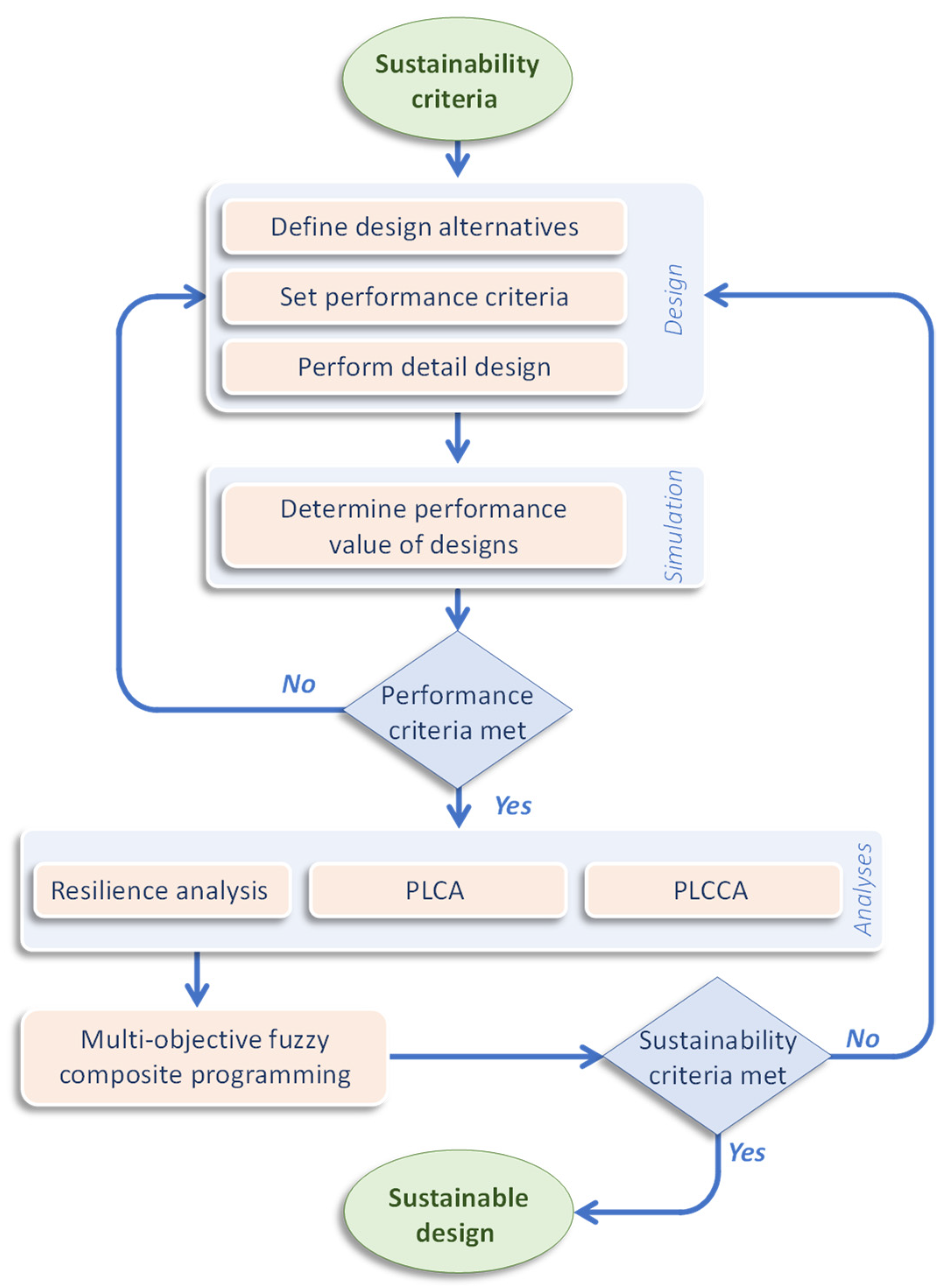
| Version | Summary | Created by | Modification | Content Size | Created at | Operation |
|---|---|---|---|---|---|---|
| 1 | Enyew Asres | + 4108 word(s) | 4108 | 2022-01-06 09:33:13 | | | |
| 2 | Vicky Zhou | Meta information modification | 4108 | 2022-01-10 02:15:02 | | |
Video Upload Options
The conventional methodologies for the design of flexible pavements are not adequate in providing solutions that meet the diverse sustainability challenges. Therefore, developing new methodologies and frameworks for the design of flexible pavement has become a priority for most highway agencies. On the other hand, there is no sound sustainable flexible pavement framework at the design phase that considers the key engineering performance, environmental impact, and economic benefits of sustainability metrics. Hence, premature failure of flexible pavements has become a common problem leading to a growing demand for sustainable pavement. Pavement engineers need to have access to tools that permit them to design flexible pavements capable of providing sustainable solutions under various complex scenarios and uncertainties.
1. Introduction
2. Framework for Design of Sustainable Flexible Pavement
2.1. Resilience Framework
-
Robustness: the capacity of a system and parts of the system to repel extreme event impacts without sustaining significant performance damage,
-
Redundancy: the degree of a system and parts of the system to sustain defined functional requirements in the event of a disturbance,
-
Resourcefulness: the facility to recognize and prioritize harms and mitigation reaction, and monitoring economic, technical, and performance-related problems,
-
Rapidity: the ability of a system and parts of the system to recover losses and avoid future disruptions [12].

-
Identify existing and anticipated future situations to withstand the likely traffic load and environmental influence,
-
Recognize the local context of susceptibility and exposure to extreme events,
-
Reduce the probability of failure, consequence, and time to recover.
2.2. Life Cycle Assessment Framework
The awareness of forecasting the environmental impact of construction-related activities and the need to prevent it is growing [53]. Thus, a framework useful for quantifying flexible pavement-related life cycle impacts at the design stage has been presented. The developed life-cycle assessment framework encourages an environmentally friendly construction activity by determining, at the early design phase, the potential environmental impact of the activity. However, it is difficult to acquire the data necessary to carry out the LCA before completing the design. Thus, LCA is not typically used in the design phase [36]. To overcome this limitation, a probabilistic LCA framework has been developed. The framework will be embedded in the design phase of the pavement to quantify the environmental impacts and energy consumptions in the holistic life of the pavement system. A framework for flexible pavement considers design inputs to quantify the energy consumption, amount of raw materials required, and emissions from the construction, maintenance, and end of life of the asphalt pavement [15]. The LCA framework allows an all-inclusive approach for recognizing strategies to reduce environmental influence throughout the life cycle of the pavement [8][54]. The developed probabilistic LCA framework is shown in Figure 2.

-
Resource efficiency,
-
Energy efficiency,
-
Reducing, eliminating, or recycling wastes and ecologically unfriendly by-products,
-
Designing pavements are safe and ecologically sound throughout their life cycle.
2.3. Life Cycle Cost Analysis Framework
LCCA is an efficient method for determining the monetary influence of possible modifications in design, construction, and materials [55]. Pavement engineers and managers mainly use LCCA to make a decision [30]. LCCA is a framework to evaluate the most economically practical investment from established options over their respective lifetimes [25]. To evaluate long-term alternative pavement design investment options, the inputs are very robust [56]. Further, all the input factors in a highway project valuation modeling have uncertainties and use the technical aspects of pavement engineering in the calculations to achieve real value for the projects [57]. There are several approaches used in performing LCCA including (i) probabilistic approach which addresses the variability and uncertainty associated with the LCCA input parameters including activity cost and timing and discount rate [18], (ii) probabilistic simulation-optimization LCCA approach [58], (iii) deterministic and probabilistic approaches [59], and (iv) probabilistic and fuzzy approaches [60]. Since the result of LCCA depends on the deterioration procedure, a consistent performance forecasting model remains a key parameter in the effective execution of real-world LCCA [61]. However, experts are frequently challenged with substantial uncertainties in estimating the future costs, in both short and long terms. This uncertainty promotes a probabilistic perspective of LCCA [25]. Therefore, a probabilistic LCCA framework has been developed as shown in Figure 3.

2.4. Sustainability Framework

| Framework | Sustainability Tool Category/Indicators | Uncertainty Consideration | Rating Systems and Certification Tools | References |
|---|---|---|---|---|
| LCA, LCCA, PMS | Decision-support tools, rating and certification tools, calculators, and guidelines | Scenario uncertainty, variability in construction materials and methods, parameter uncertainty, and use Monte Carlo analysis | Green LITES, Green roads, I-LAST, INVEST, and STARS | [6] |
| Pavement sustainability | Environmental impact Social impact | [26] | ||
| index Framework | Economic impact |
3. Conclusions
3.1. Resilience, Life Cycle Assessment, and Life Cycle Cost Analysis
3.2. Sustainable Framework
References
- Chong, D.; Wang, Y. Impacts of flexible pavement design and management decisions on life cycle energy consumption and carbon footprint. Int. J. Life Cycle Assess. 2017, 22, 952–971.
- Ruiz, A.; Guevara, J. Environmental and Economic Impacts of Road Infrastructure Development: Dynamic Considerations and Policies. J. Manag. Eng. 2020, 36, 04020006.
- Zulu, K.; Singh, R.P.; Shaba, F.A. Environmental and economic analysis of selected pavement preservation treatments. Civ. Eng. J. 2020, 6, 210–224.
- France-Mensah, J.; O’Brien, W.J. Developing a Sustainable Pavement Management Plan: Tradeoffs in Road Condition, User Costs, and Greenhouse Gas Emissions. J. Manag. Eng. 2019, 35, 04019005.
- Van Wijk, I.; Williams, D.J.; Serati, M. Development and Application of Sustainability Models for Unsealed Road Pavements. Transp. Res. Rec. 2017, 2657, 89–98.
- Babashamsi, P.; Md Yusoff, N.I.; Ceylan, H.; Md Nor, N.G.; Jenatabadi, H.S. Sustainable development factors in pavement life-cycle: Highway/airport review. Sustainability 2016, 8, 248.
- Subedi, S.; Hassan, M.M.; Nie, Q.; Talaat Soliman, N.S.; Gaspard, K.; Rupnow, T. Decision-Making Tool for Incorporating Cradle-to-Gate Sustainability Measures into Pavement Design. J. Transp. Eng. Part B Pavements 2018, 144, 04018051.
- Yang, S.H.; Liu, J.Y.H.; Tran, N.H. Multi-criteria life cycle approach to develop weighting of sustainability indicators for pavement. Sustainability 2018, 10, 2325.
- Sun, W.; Lu, G.; Ye, C.; Chen, S.; Hou, Y.; Wang, D.; Wang, L.; Oeser, M. The State of the Art: Application of Green Technology in Sustainable Pavement. Adv. Mater. Sci. Eng. 2018, 2018, 9760464.
- Pouranian, M.R.; Shishehbor, M. Sustainability assessment of green asphalt mixtures: A review. Environments 2019, 6, 73.
- Aurangzeb, Q.; Al-Qadi, I.L. Asphalt pavements with high reclaimed asphalt pavement content: Economic and environmental perspectives. Transp. Res. Rec. 2014, 2456, 161–169.
- Ayyub, B.M. Practical Resilience Metrics for Planning, Design, and Decision Making. ASCE ASME J. Risk Uncertain. Eng. Syst. Part A Civ. Eng. 2015, 1, 04015008.
- Knott, J.F.; Jacobs, J.M.; Sias, J.E.; Kirshen, P.; Dave, E.V. A framework for introducing climate-change adaptation in pavement management. Sustainability 2019, 11, 4382.
- Hosseini, S.; Barker, K. Modeling infrastructure resilience using Bayesian networks: A case study of inland waterway ports. Comput. Ind. Eng. 2016, 93, 252–266.
- Butt, A.A.; Birgisson, B.; Kringos, N. Considering the benefits of asphalt modification using a new technical life cycle assessment framework. J. Civ. Eng. Manag. 2016, 22, 597–607.
- Bryce, J.; Katicha, S.; Flintsch, G.; Sivaneswaran, N.; Santos, J. Probabilistic life-cycle assessment as network-level evaluation tool for use and maintenance phases of pavements. Transp. Res. Rec. 2014, 2455, 44–53.
- Wang, Z.; Wang, H. Life-cycle cost analysis of optimal timing of pavement preservation. Front. Struct. Civ. Eng. 2017, 11, 17–26.
- Llopis-Castelló, D.; García-Segura, T.; Montalbán-Domingo, L.; Sanz-Benlloch, A.; Pellicer, E. Influence of pavement structure, traffic, and weather on urban flexible pavement deterioration. Sustainability 2020, 12, 9717.
- Yodo, N.; Wang, P. Resilience Modeling and Quantification for Engineered Systems Using Bayesian Networks. J. Mech. Des. Trans. ASME 2016, 138, 031404.
- Okte, E.; Al-Qadi, I.L.; Ozer, H. Effects of Pavement Condition on LCCA User Costs. Transp. Res. Rec. 2019, 2673, 339–350.
- Gudipudi, P.P.; Underwood, B.S.; Zalghout, A. Impact of climate change on pavement structural performance in the United States. Transp. Res. Part D Transp. Environ. 2017, 57, 172–184.
- Praticò, F.G.; Giunta, M.; Mistretta, M.; Gulotta, T.M. Energy and environmental life cycle assessment of sustainable pavement materials and technologies for urban roads. Sustainability 2020, 12, 704.
- Hoxha, E.; Vignisdottir, H.R.; Barbieri, D.M.; Wang, F.; Bohne, R.A.; Kristensen, T.; Passer, A. Life cycle assessment of roads: Exploring research trends and harmonization challenges. Sci. Total Environ. 2021, 759, 143506.
- Yang, R.; Al-Qadi, I.L.; Ozer, H. Effect of Methodological Choices on Pavement Life-Cycle Assessment. Transp. Res. Rec. 2018, 2672, 78–87.
- Swei, O.; Gregory, J.; Kirchain, R. Probabilistic life-cycle cost analysis of pavements: Drivers of variation and implications of context. Transp. Res. Rec. 2015, 2523, 47–55.
- Obazee-Igbinedion, S.O.; Owolabi, O. Pavement sustainability index for highway infrastructures: A case study of Maryland. Front. Struct. Civ. Eng. 2018, 12, 192–200.
- Bavandpour, M. Evaluation of the life shortening of flexible pavements. J. Fundam. Appl. Sci. 2017, 9, 470.
- Plati, C. Sustainability factors in pavement materials, design, and preservation strategies: A literature review. Constr. Build. Mater. 2019, 211, 539–555.
- El-Hakim, M.Y.; Tighe, S.L. Sustainability of perpetual pavement designs: Canadian perspective. Transp. Res. Rec. 2012, 2304, 10–16.
- Umer, A.; Hewage, K.; Haider, H.; Sadiq, R. Sustainability evaluation framework for pavement technologies: An integrated life cycle economic and environmental trade-off analysis. Transp. Res. Part D Transp. Environ. 2017, 53, 88–101.
- Anastasio, S.; De Visscher, J.; Wayman, M.; Bueche, N.; Hoff, I.; Maeck, J.; Vanelstraete, A.; Vansteenkiste, S.; Schobinger, B. Standardization of the Environmental Information for Asphalt Technologies. Transp. Res. Procedia 2016, 14, 3542–3551.
- Corriere, F.; Rizzo, A. Sustainability in Road Design: A Methodological Proposal for the Drafting of Guideline. Procedia Soc. Behav. Sci. 2012, 53, 39–48.
- Ghimire, S.R.; Johnston, J.M. A modified eco-efficiency framework and methodology for advancing the state of practice of sustainability analysis as applied to green infrastructure. Integr. Environ. Assess. Manag. 2017, 13, 821–831.
- Hasan, U.; Whyte, A.; Al Jassmi, H. Critical review and methodological issues in integrated life-cycle analysis on road networks. J. Clean. Prod. 2019, 206, 541–558.
- Jiang, R.; Wu, P. Estimation of environmental impacts of roads through life cycle assessment: A critical review and future directions. Transp. Res. Part D Transp. Environ. 2019, 77, 148–163.
- Park, J.Y.; Kim, B.S. Life-cycle Assessment-based Environmental Impact Estimation Model for Earthwork-type Road Projects in the Design Phase. KSCE J. Civ. Eng. 2019, 23, 481–490.
- Faber, M.H.; Qin, J.; Miraglia, S.; Thöns, S. On the Probabilistic Characterization of Robustness and Resilience. Procedia Eng. 2017, 198, 1070–1083.
- Tonn, G.; Czajkowski, J.; Kunreuther, H.; Angotti, K.; Gelman, K. Measuring Transportation Infrastructure Resilience: Case Study with Amtrak. J. Infrastruct. Syst. 2020, 26, 05020001.
- Berkeley, A.R.; Wallace, M.; COO, C. A Framework for Establishing Critical Infrastructure Resilience Goals: Final Report and Recommendations. Final Rep. Recomm. Counc. 2010, 18–21.
- Sharma, N.; Tabandeh, A.; Gardoni, P. Resilience analysis: A mathematical formulation to model resilience of engineering systems. Sustain. Resilient Infrastruct. 2017, 9689, 1–19.
- Hossain, N.U.I.; Jaradat, R.; Hosseini, S.; Marufuzzaman, M.; Buchanan, R.K. A framework for modeling and assessing system resilience using a Bayesian network: A case study of an interdependent electrical infrastructure system. Int. J. Crit. Infrastruct. Prot. 2019, 25, 62–83.
- Isailović, I.; Wistuba, M.P.; Falchetto, A.C. Experimental study on asphalt mixture recovery. Mater. Struct. Constr. 2017, 50, 196.
- Plati, C.; Georgiou, P.; Papavasiliou, V. Simulating pavement structural condition using artificial neural networks. Struct. Infrastruct. Eng. 2016, 12, 1127–1136.
- Henning, T.F.P. Integrating Climate Change into Road Asset Management. Integr. Clim. Chang. Road Asset Manag. 2017.
- Abimbola, M.; Khan, F. Resilience modeling of engineering systems using dynamic object-oriented Bayesian network approach. Comput. Ind. Eng. 2019, 130, 108–118.
- Harshan, R.; Glen, Z.; Michael, M. APEGBC professional practice guidelines-developing climate change-resilient designs for highway infrastructure in British Columbia (Interim). Proc. Annu. Conf. Can. Soc. Civ. Eng. 2017, 2017, 90–99.
- Abkowitz, M.; Camp, J.; Dundon, L. Assessing the Vulnerability of Tennessee Transportation Assets to Extreme Weather. In Proceedings of the 8th Annual Intermodal Conference, Memphis, TN, USA, 7 October 2014; p. 49.
- Elshaer, M. Assessing the Mechanical Response of Pavements during and after Flooding. Ph.D. Dissertation, University of New Hampshire, Durham, NH, USA, 2017.
- Douglas, E.; Jacobs, J.; Hayhoe, K.; Silka, L.; Daniel, J.; Collins, M.; Alipour, A.; Anderson, B.; Hebson, C.; Mecray, E.; et al. Progress and challenges in incorporating climate change information into transportation research and design. J. Infrastruct. Syst. 2017, 23, 04017018.
- Wisetjindawat, W.; Kermanshah, A.; Derrible, S.; Fujita, M. Stochastic modeling of road system performance during multihazard events: Flash floods and earthquakes. J. Infrastruct. Syst. 2017, 23, 04017031.
- Panteli, M.; Mancarella, P.; Trakas, D.N.; Kyriakides, E.; Hatziargyriou, N.D. Metrics and Quantification of Operational and Infrastructure Resilience in Power Systems. IEEE Trans. Power Syst. 2017, 32, 4732–4742.
- States, U.; Qiao, Y.; Santos, J.; Stoner, A.M.K.; Flinstch, G. Climate change impacts on asphalt road pavement construction and maintenance: An economic life cycle assessment of adaptation measures in the State of Virginia, USA. J. Ind. Ecol. 2020, 2005, 342–355.
- Antunes, L.N.; Ghisi, E.; Thives, L.P. Permeable pavements life cycle assessment: A literature review. Water 2018, 10, 1575.
- Dos Santos, J.M.O.; Thyagarajan, S.; Keijzer, E.; Flores, R.F.; Flintsch, G. Comparison of life-cycle assessment tools for road pavement infrastructure. Transp. Res. Rec. 2017, 2646, 28–38.
- Ozer, H.; Yang, R.; Al-Qadi, I.L. Quantifying sustainable strategies for the construction of highway pavements in Illinois. Transp. Res. Part D Transp. Environ. 2017, 51, 1–13.
- Lee, E.B.; Thomas, D.K.; Alleman, D. Incorporating road user costs into integrated Life-Cycle Cost Analyses for infrastructure sustainability: A case study on Sr-91 corridor improvement project (Ca). Sustainability 2018, 10, 179.
- Esmaeeli, A.N.; Heravi, G. Real Options Approach versus Conventional Approaches to Valuing Highway Projects under Uncertainty. J. Constr. Eng. Manag. 2019, 145, 04019068.
- Guo, F.; Gregory, J.; Kirchain, R. Probabilistic Life-Cycle Cost Analysis of Pavements Based on Simulation Optimization. Transp. Res. Rec. 2019, 2673, 389–396.
- Wang, H.; Wang, Z. Deterministic and probabilistic life-cycle cost analysis of pavement overlays with different pre-overlay conditions. Road Mater. Pavement Des. 2019, 20, 58–73.
- Plebankiewicz, E.; Meszek, W.; Zima, K.; Wieczorek, D. Probabilistic and fuzzy approaches for estimating the life cycle costs of buildings under conditions of exposure to risk. Sustainability 2020, 12, 226.
- Han, D.; Kaito, K.; Kobayashi, K.; Aoki, K. Management scheme of road pavements considering heterogeneous multiple life cycles changed by repeated maintenance work. KSCE J. Civ. Eng. 2017, 21, 1747–1756.
- Wang, H.; Zhao, J. Development of overweight permit fee using mechanistic-empirical pavement design and life-cycle cost analysis. Transport 2016, 31, 156–166.
- Qiao, Y.; Dave, E.; Parry, T.; Valle, O.; Mi, L.; Ni, G.; Yuan, Z.; Zhu, Y. Life cycle costs analysis of reclaimed asphalt pavement (RAP) under future climate. Sustainability 2019, 11, 5414.
- Akbarian, M.; Swei, O.; Kirchain, R.; Gregory, J. Probabilistic characterization of life-cycle agency and user costs case study of Minnesota. Transp. Res. Rec. 2017, 2639, 93–101.
- Bagdatli, M.E.C. Fuzzy Logic–Based Life-Cycle Cost Analysis of Road Pavements. J. Transp. Eng. Part B Pavements 2018, 144, 04018050.
- Asia, F.I.N. Climate and Disaster Resilient Transport System and Infrastructure Development for Nepal. 2015. Available online: https://www.uncrd.or.jp/content/documents/3381Background%20Paper%20-EST%20Plenary%20Session%202%20(No.%202).pdf (accessed on 15 December 2021).
- Muench, S.T.; Anderson, J.L.; Hall, M.; Muench, S.T.; Anderson, J.L. Final Technical Report Greenroads: A Sustainability Performance Metric for Roadway Design and Construction by University of Washington and a Report Prepared for Transportation Northwest (TransNow) University of Washington DTRT07-G-0010 None. 2009. Available online: http://depts.washington.edu/trac/bulkdisk/pdf/725.1.pdf (accessed on 15 December 2021).
- Thongram, S.; Rajbongshi, P. Reliability Based Deterministic Design Approach in Asphalt Pavements. J. Innov. Res. Sci. Eng. Tech. 2016, 3092–3097.




